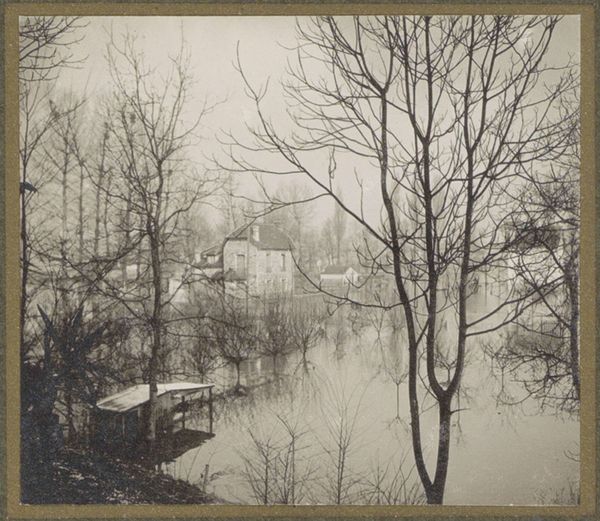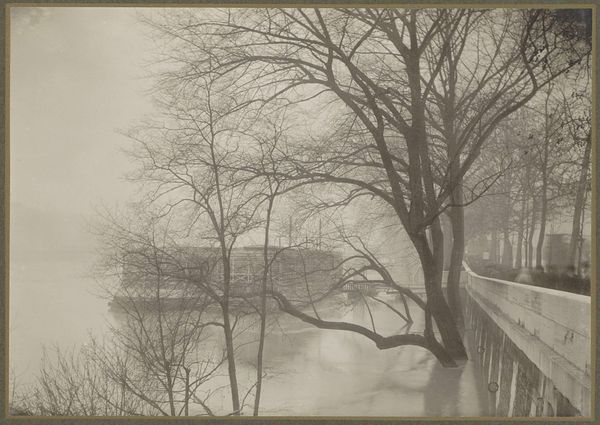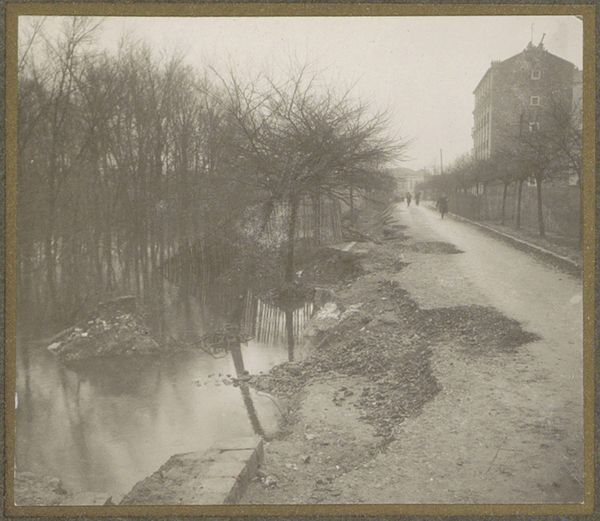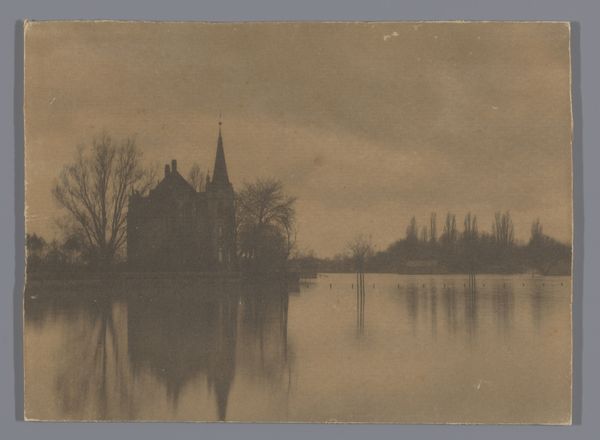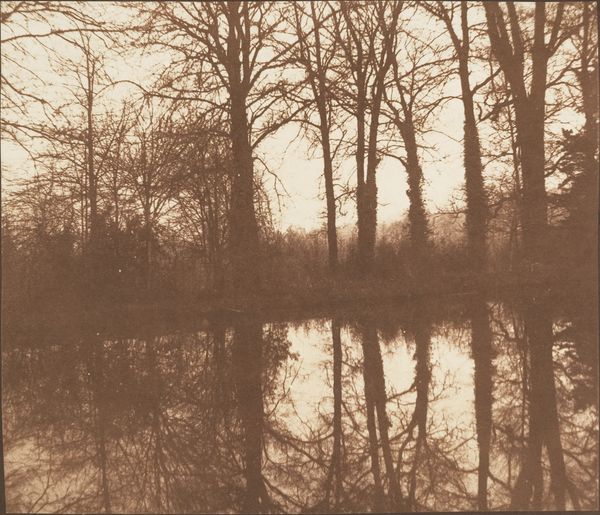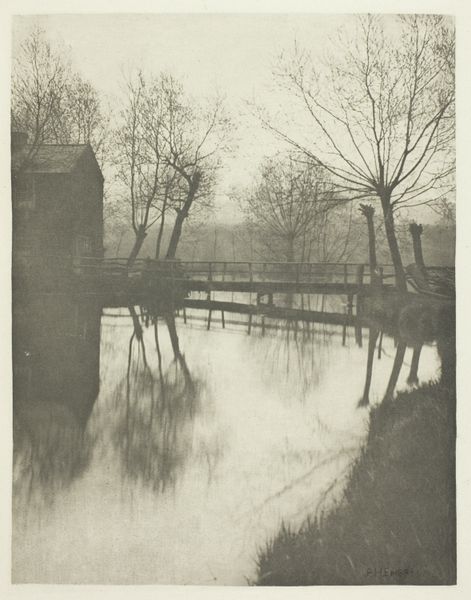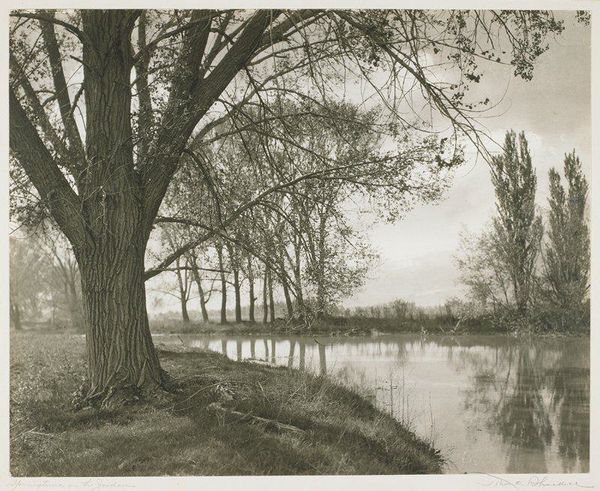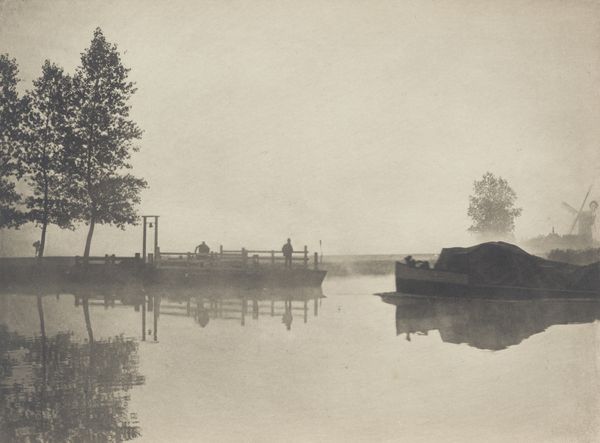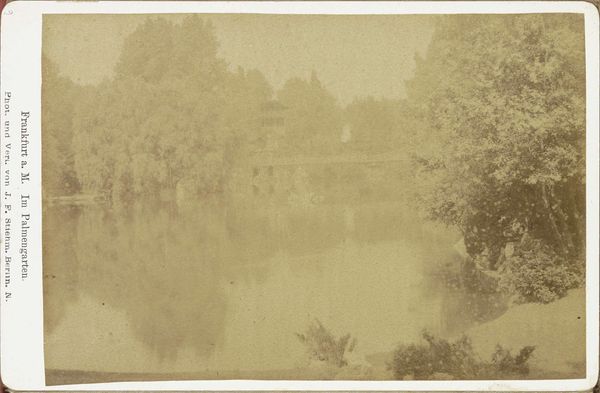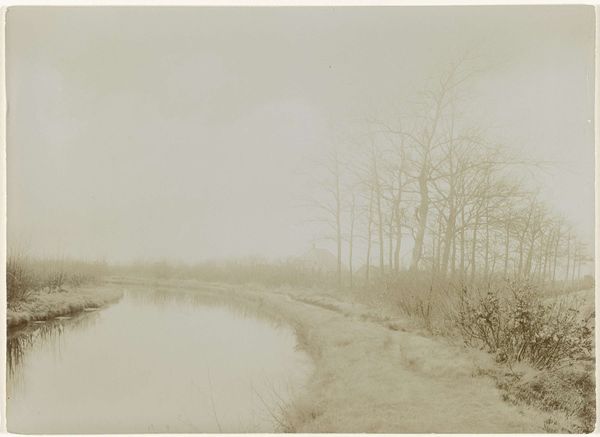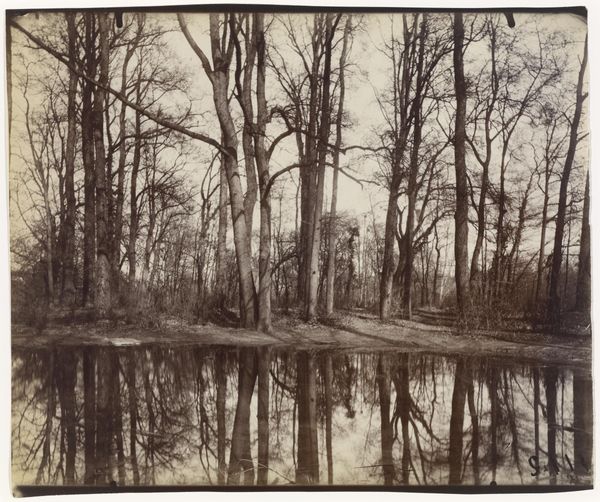
Dimensions: height 52 mm, width 60 mm
Copyright: Rijks Museum: Open Domain
Curator: My first impression is bleak! Overwhelmingly…gray. Like looking at the world through a fogged lens. Editor: This compelling photograph by G. Dangereux, taken between 1910 and 1911, offers more than meets the eye, delving into a nuanced examination of environmental disruption. Entitled "Huizen in ondergelopen buitenwijk van Parijs gezien door kale bomen," or "Houses in a flooded suburb of Paris seen through bare trees", it captures a moment freighted with both natural beauty and the stark reality of displacement. Curator: Displacement is exactly what I’m feeling! It’s subtle, because on one hand there’s a morbid beauty to it, almost romantic... but underneath is something more sinister, especially knowing it’s a photo and thus reality. Those skeletal trees almost clawing at the sky feel emblematic of something lost, wouldn’t you say? Editor: Precisely. The photograph gains further poignancy when considering its temporal context. Paris, during this period, faced profound infrastructural challenges with rapid urbanization. I think this flood presents a tangible representation of the era’s precarious relationship with urban expansion and the costs to certain communities. The almost complete monochromatic palette—it's primarily shades of gray, verging on brown and sepia—underlines a sense of isolation. It creates a timelessness that makes it so difficult to separate from social inequity or even climate catastrophe now. Curator: The water nearly blurs the buildings away entirely. It's like…a memory of a place. The reflection of the buildings in the water is especially striking; they are quite literally, mirrored, so everything’s visually doubled… perhaps it's even referencing that period of radical cultural and technological change, a city flooded with new experience that blurs your identity! Am I going too far? Editor: Not at all. We can interpret the watery reflections of architecture, nature, and history as symbolic doubling – as you keenly observed - as indicators of lost stability and the shifting foundations of identity and societal expectations within a dramatically evolving metropolis. That sense of disorientation is key, because ultimately that is a crucial and ongoing legacy with the city, which continues to rapidly grow with dire effects today. Curator: You’ve truly re-contextualized what I saw just a minute ago… Suddenly, it's not just houses under water, it's so many more important things we should consider every time we’re thinking about rapid change. Editor: I’m just glad that together, maybe, we helped to create some food for thought!
Comments
No comments
Be the first to comment and join the conversation on the ultimate creative platform.
